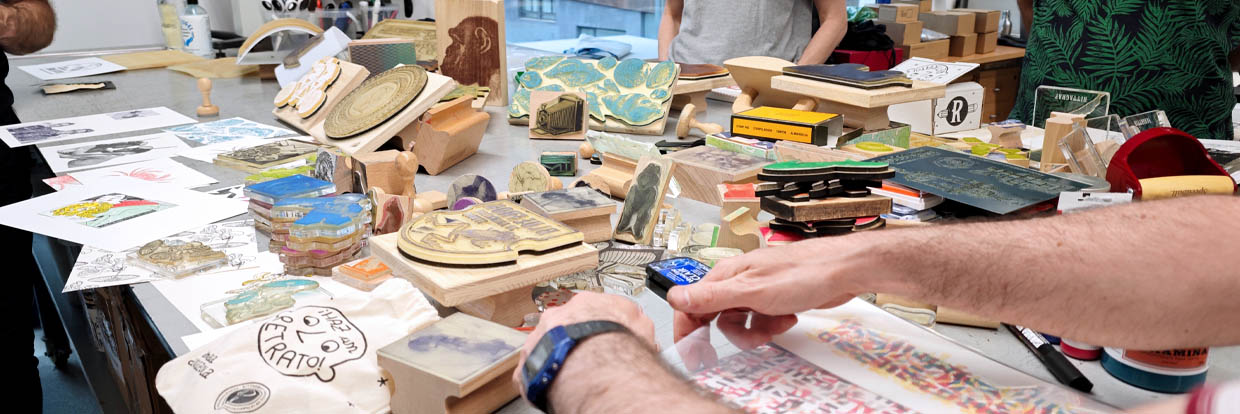
® Rittagraf
During the first week of June 2025, Rittagraf had the pleasure of leading the workshop “Stamps and Block Printing: A Multiple System for Creating Printed Images” at BilbaoArte Fundazioa, a benchmark center for contemporary creation that promotes multidisciplinarity and access to high-quality technical spaces.
BilbaoArte offers residencies, specialized workshops, and an educational program committed to graphic, audiovisual, and visual arts practices—fostering a truly exceptional creative ecosystem in the heart of Bilbao.
The course was led by Carlos Alguacil, director of Rittagraf, and gathered for five days a diverse group of artists, educators, designers, and illustrators interested in graphic experimentation. The goal was clear: to explore the expressive potential of the stamp as a graphic tool and a printmaking technique.
The Stamp as a Graphic Tool
We began by looking at the historical ways of creating stamps manually: from woodcut and linocut to contemporary materials, as well as industrial manufacturing systems such as vulcanizing, plate-based photopolymers, liquid photopolymer resin, natural or synthetic rubber, flash systems, and laser cutting and engraving.
We examined not only the creative possibilities and strengths of each method but also their technical limitations and specific requirements.
We reflected on the morphology of the stamp, its ability to transfer ink, and its narrative potential. The stamp was approached not just as a functional tool, but as a visual language with its own graphic possibilities—situated somewhere between traditional relief printing and contemporary graphic experimentation.
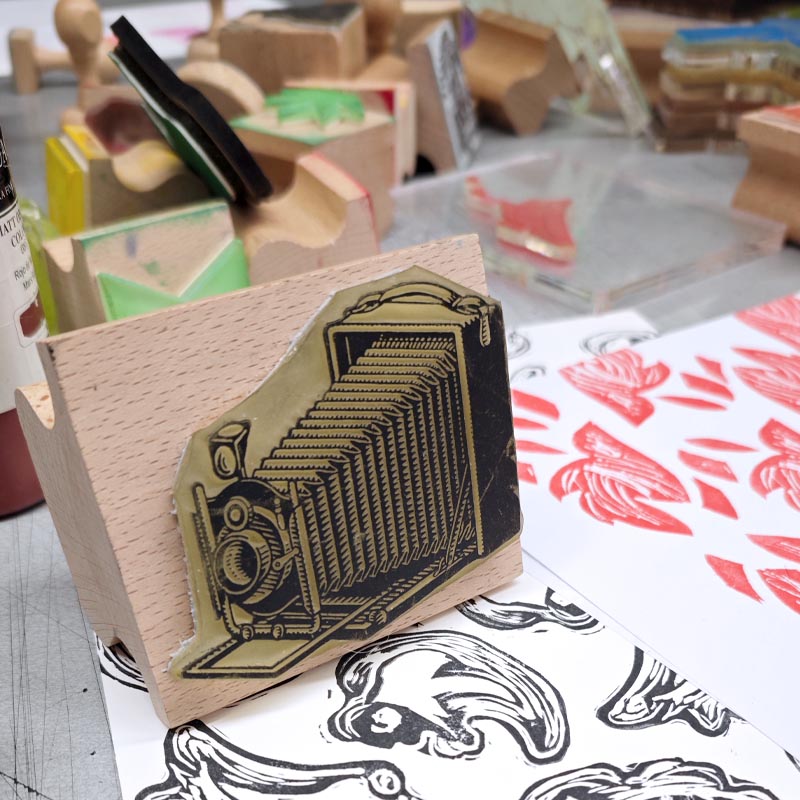

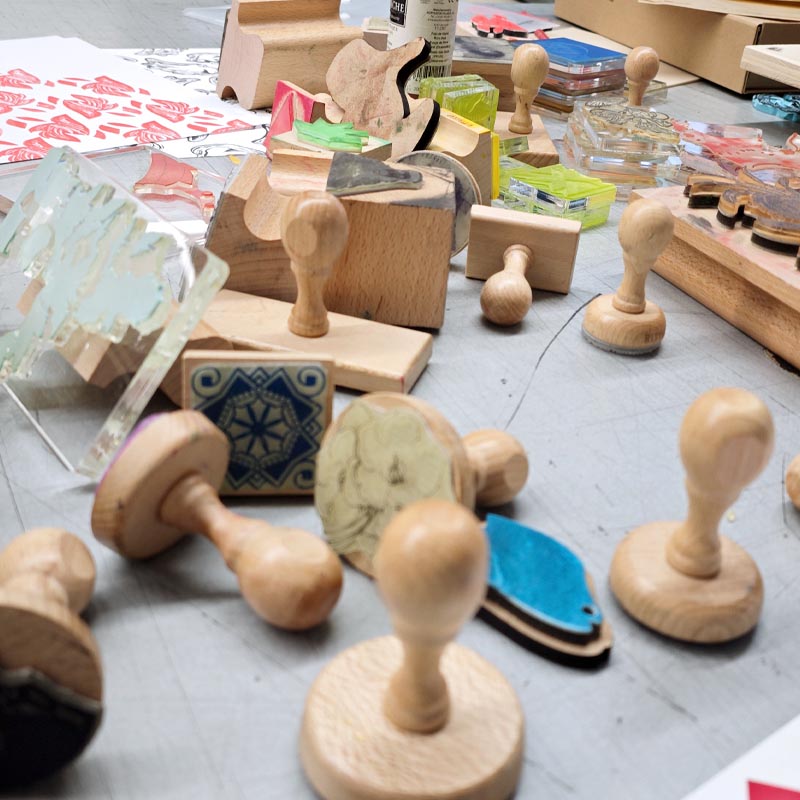

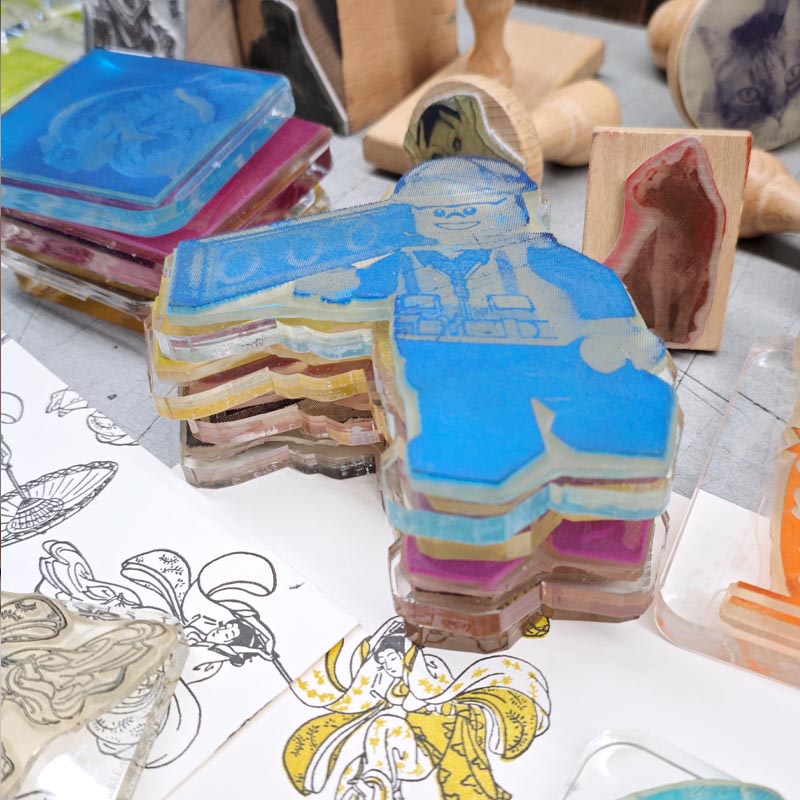

Stamps with Manual Engraving and Contemporary Materials
We began the hands-on part of the workshop with manual engraving processes: direct carving on rubbers, linoleum, synthetic elastomers, and other materials selected for their density and ink-transfer capabilities.
Using an approach rooted in woodcut and linocut techniques, participants learned how to create printing matrices with varying levels of detail, texture, and graphic expression.
We also demonstrated how non-traditional materials can be adapted to traditional processes, expanding the plastic and creative potential of stamp-based printmaking.
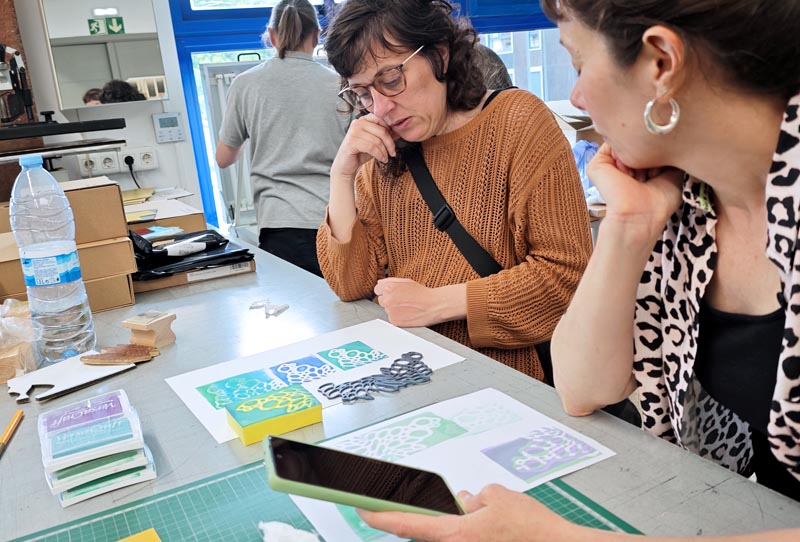

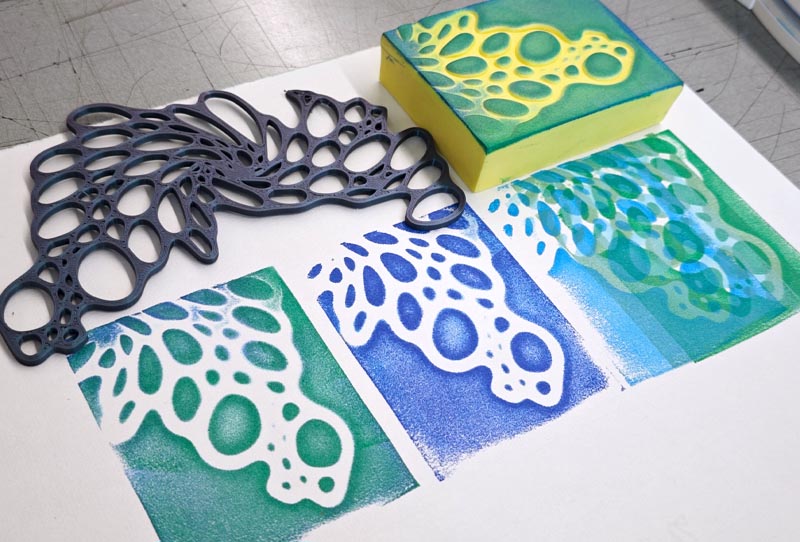

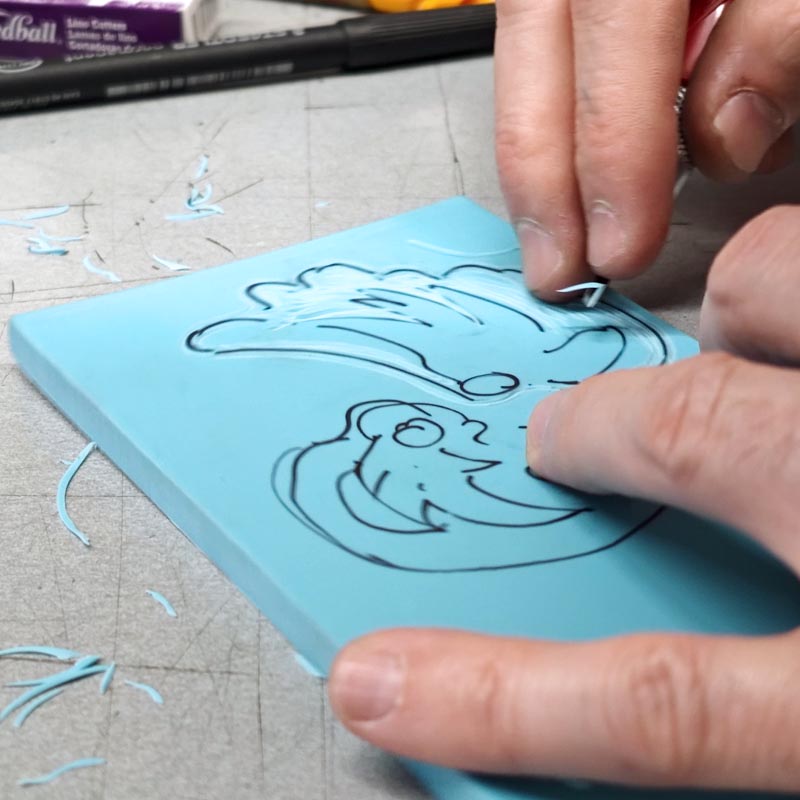

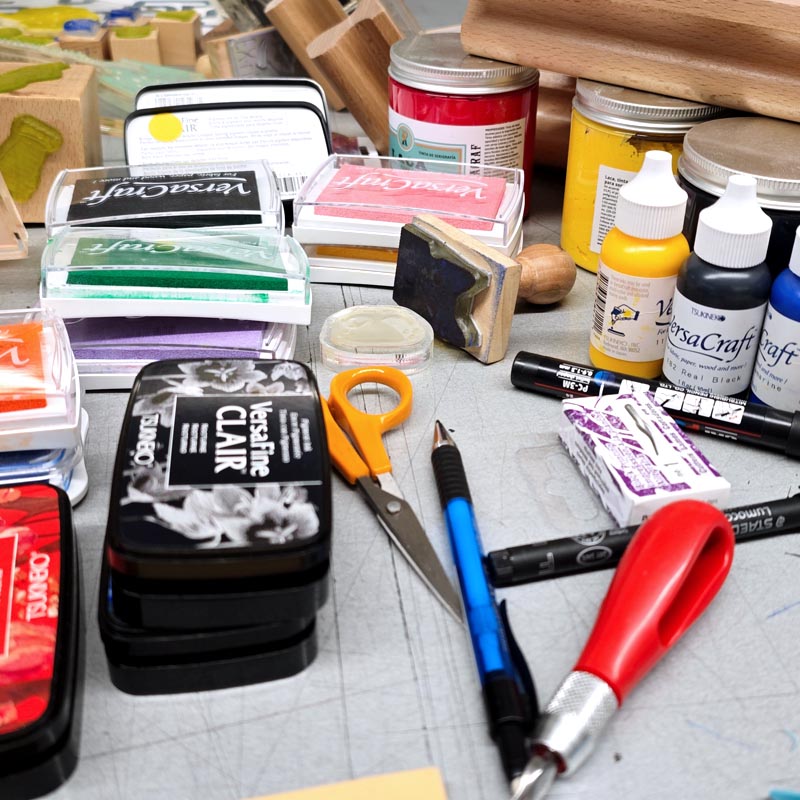

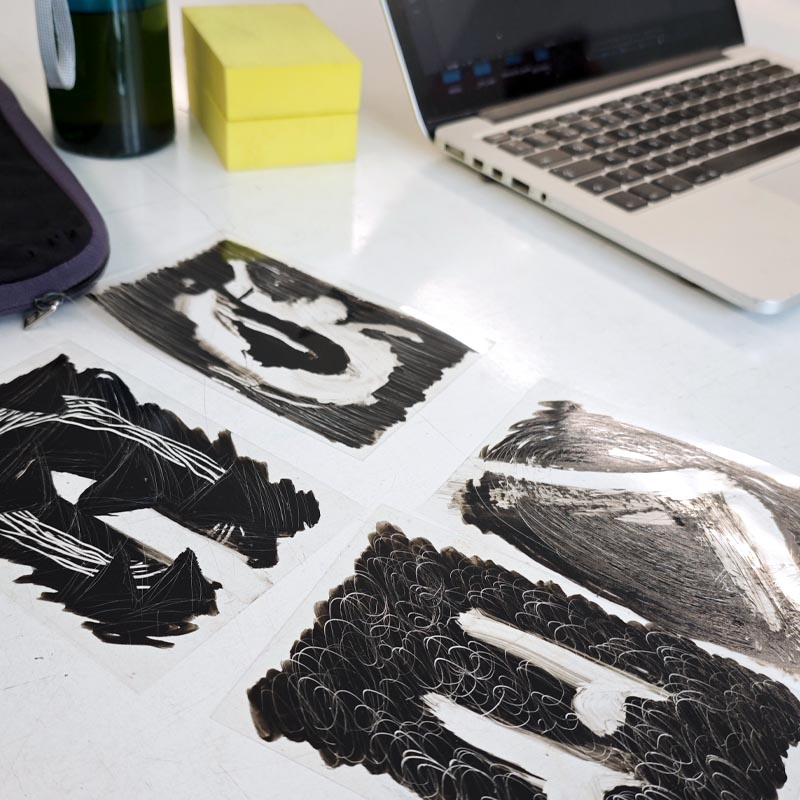

Stamps with Photomechanical Techniques
In the second phase of the workshop, we explored photomechanical techniques. We worked with dry photopolymer plates and liquid resins; photosensitive materials that allow the creation of stamps through UV exposure and water-based development.
Participants produced their own positives, both manually and digitally, using a range of tools and methods.
These techniques delivered high-definition results, enabling the creation of stamps with halftones, fine lines, or even photographic image reproduction—greatly expanding the creative possibilities of stamps as a medium for graphic expression.
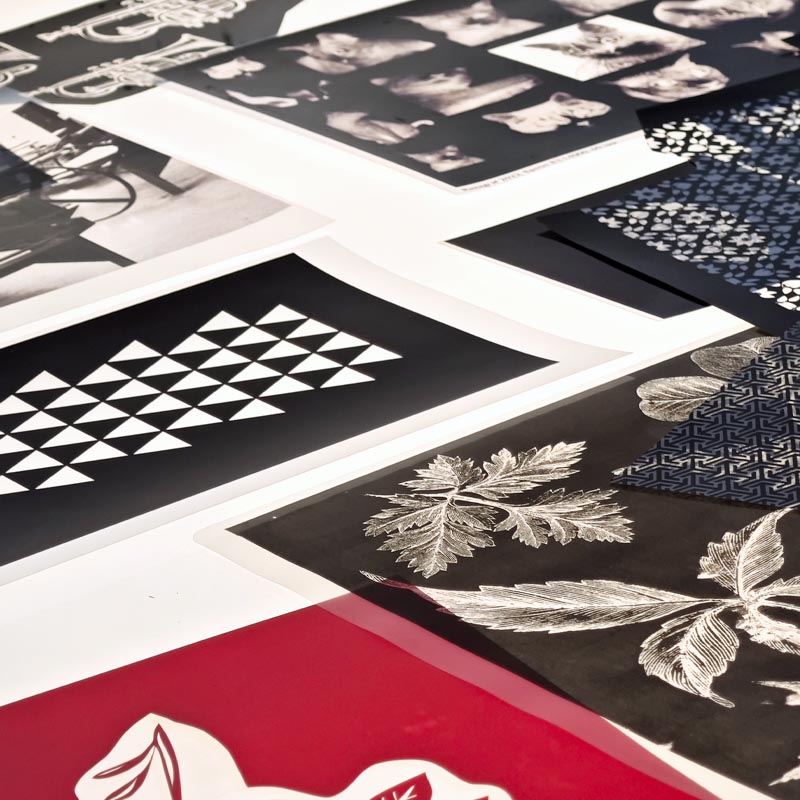

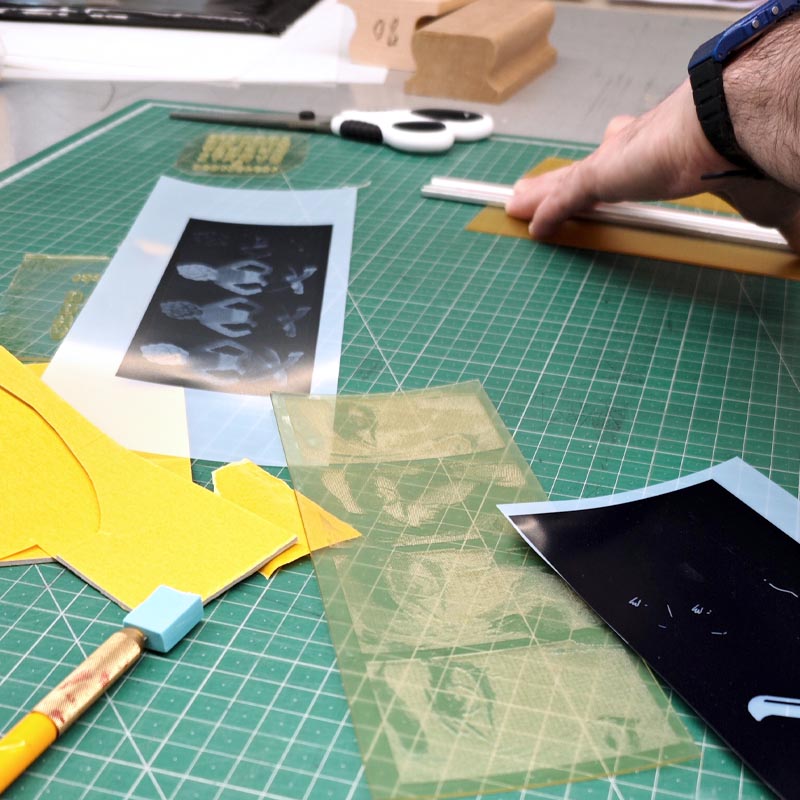

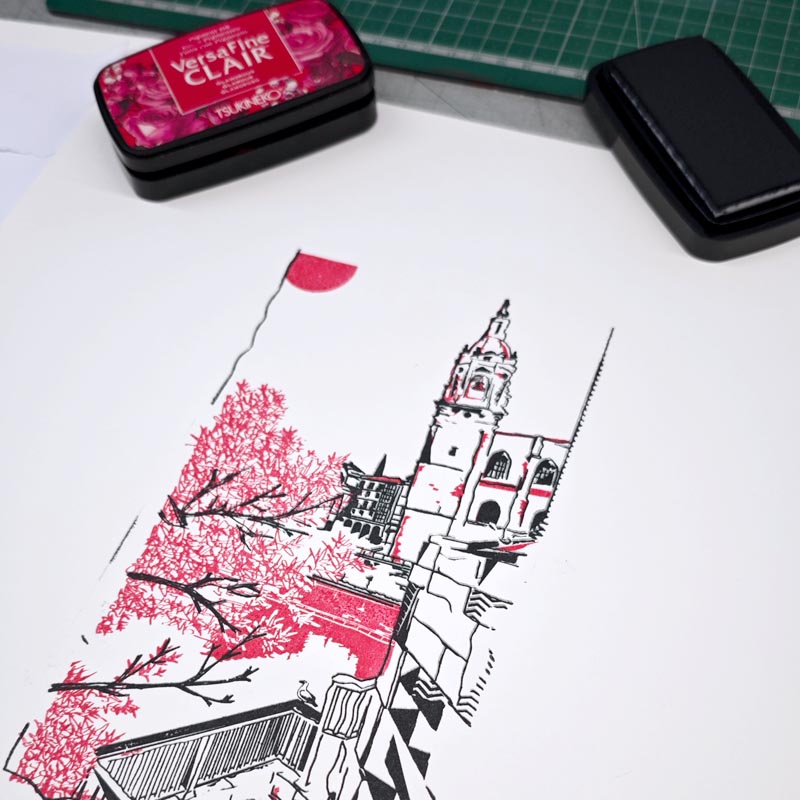



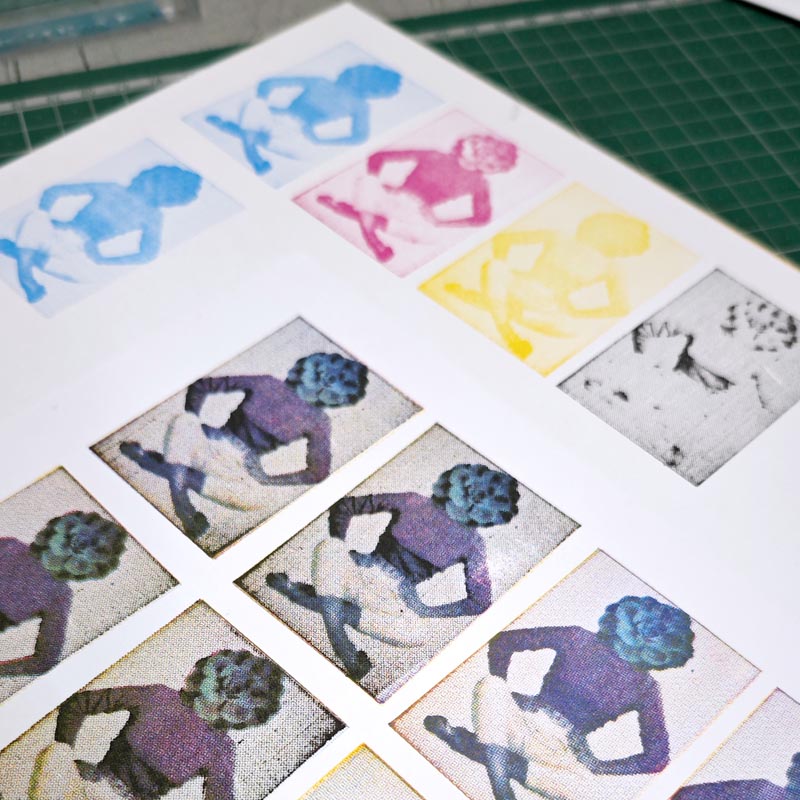

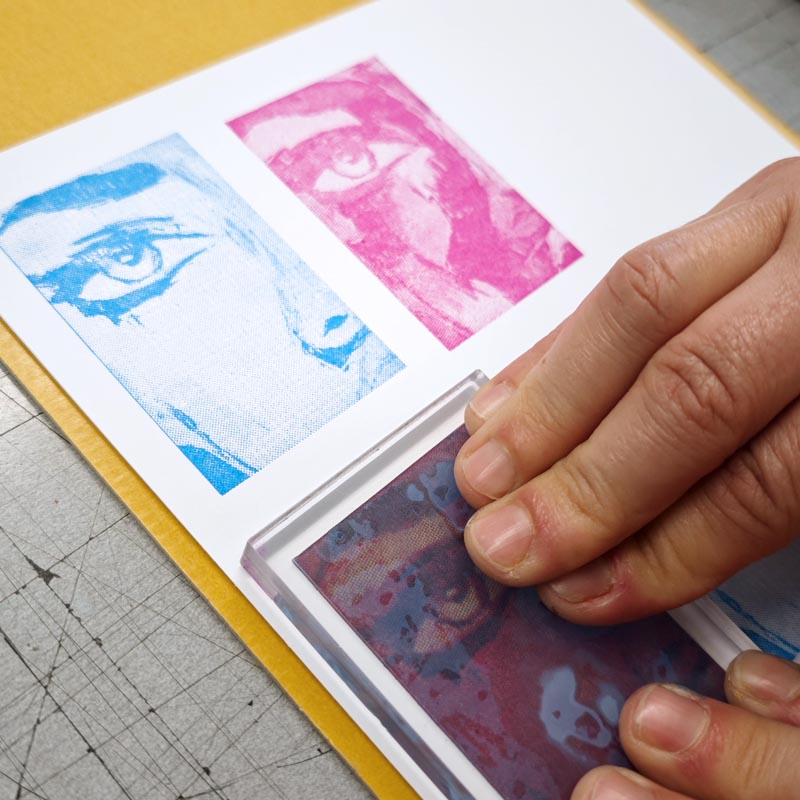

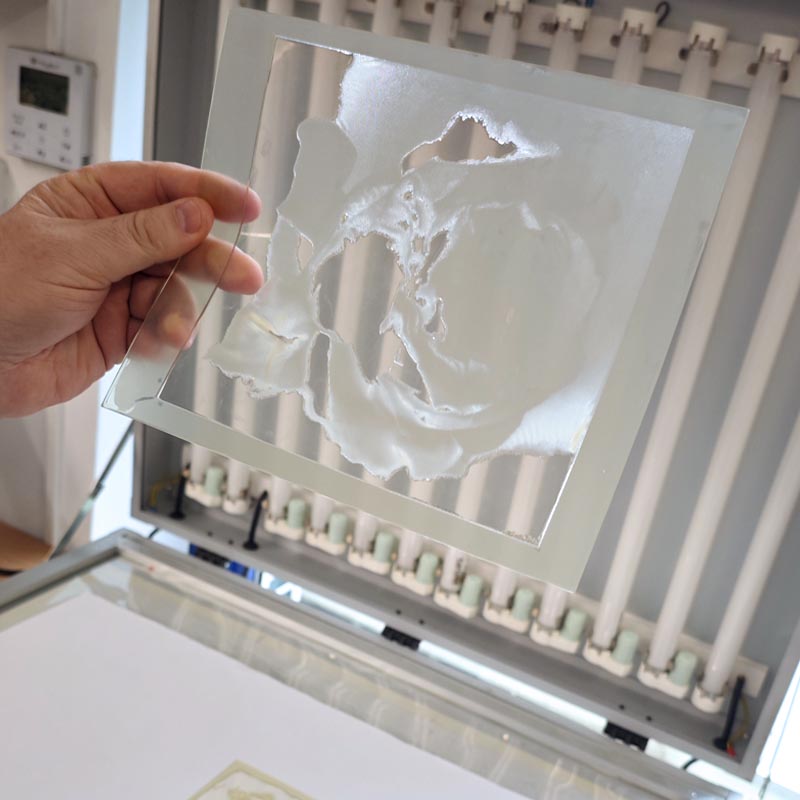

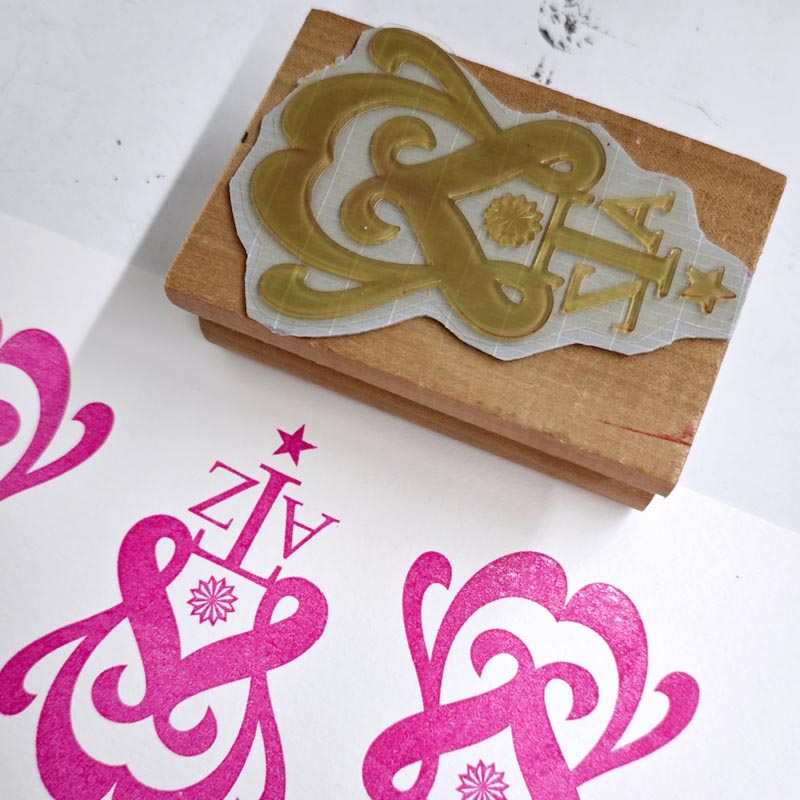

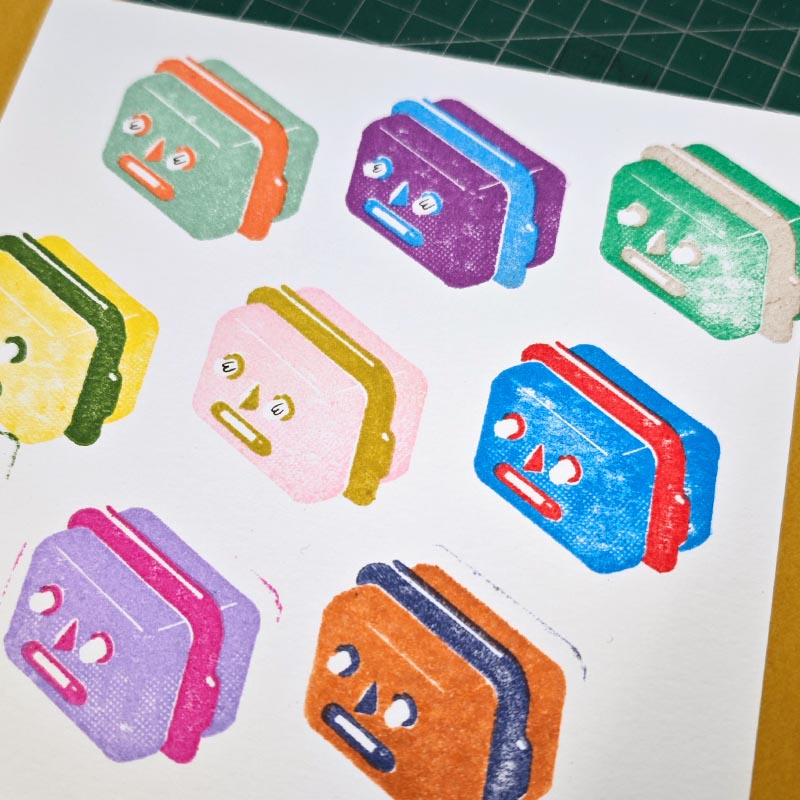

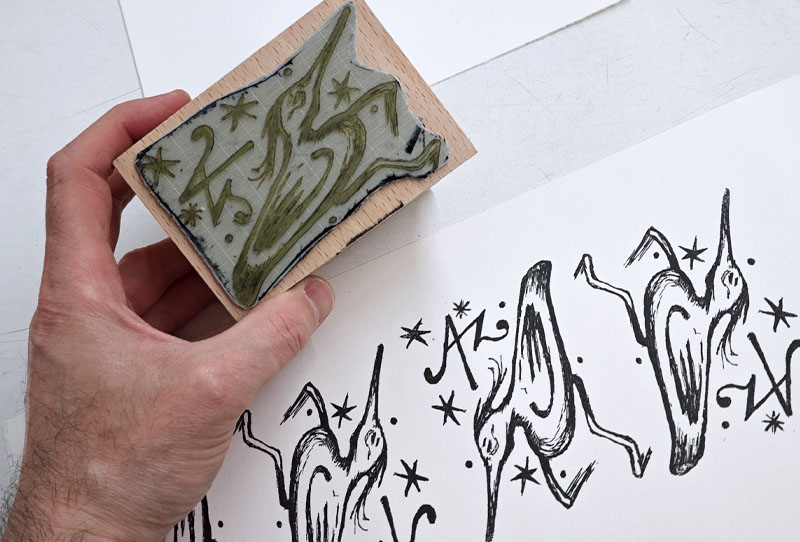

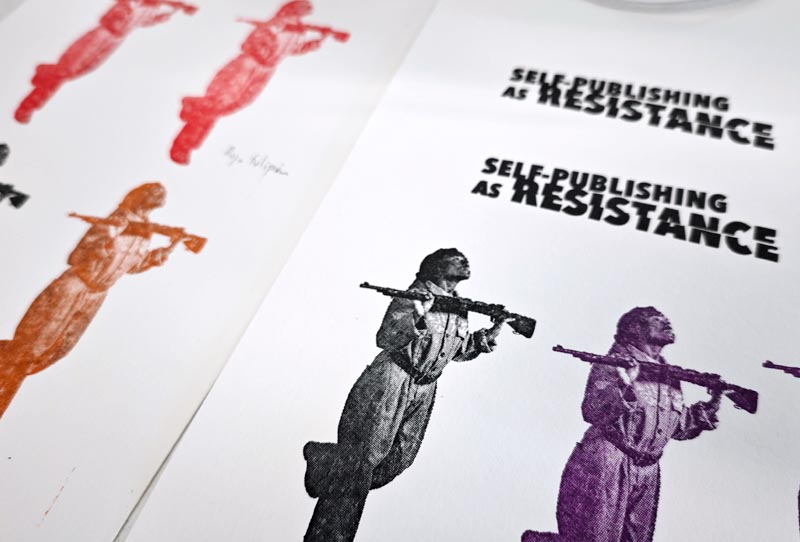

Stamps with Laser Engraving and Cutting
Thanks to the facilities at BilbaoArte, we had the opportunity to work with a CO₂ laser engraving and cutting machine. This technology allowed us to engrave stamps onto specific rubber materials, as well as cut and mark foam or synthetic materials with varying densities and behaviors.
At Rittagraf, as specialized stamp manufacturers and regular users of this technology, we have extensive experience in laser engraving. This enabled us to bring a deeper technical perspective to the workshop. We shared practical recommendations, material analysis, and production strategies that go beyond standard laser applications.
We explored possibilities that transcend the industrial standard of rubber stamp making, opening the door to more experimental and expressive approaches. This technological introduction proved especially enriching for many participants, who discovered new ways to create graphic printing plates and expand their visual language through modern digital tools.
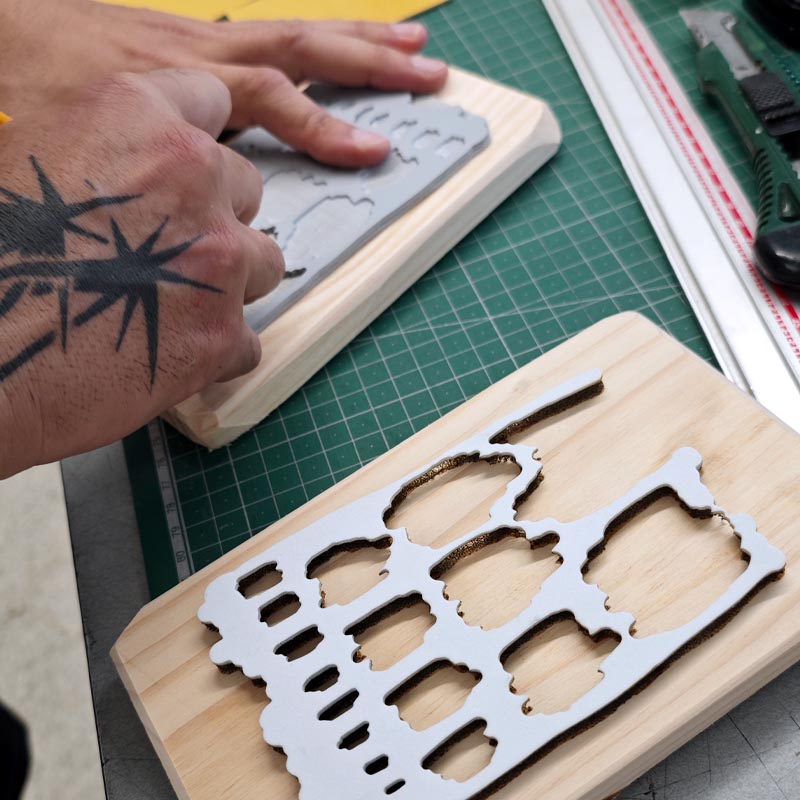

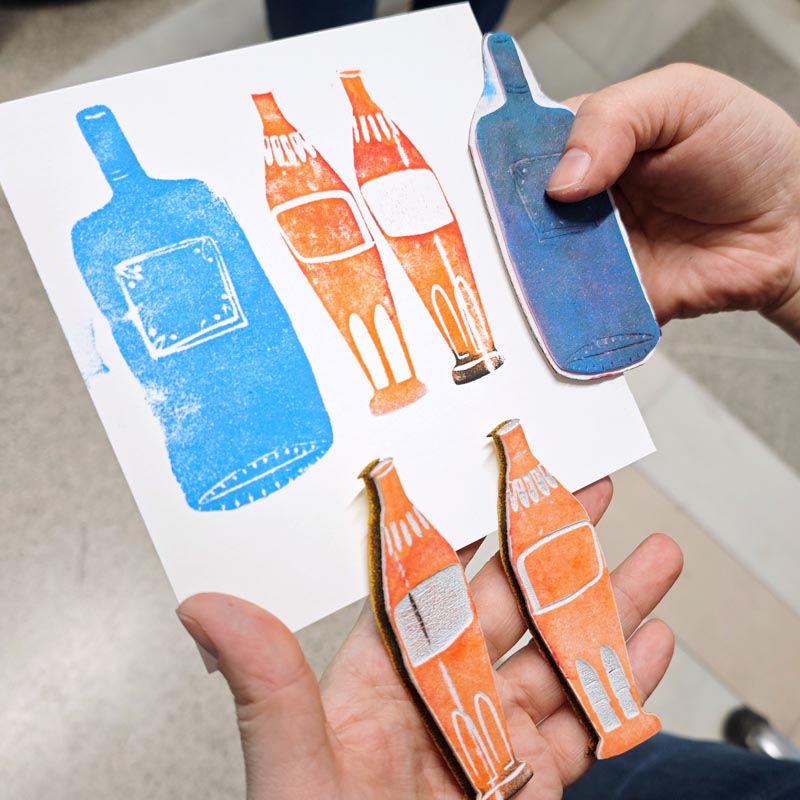

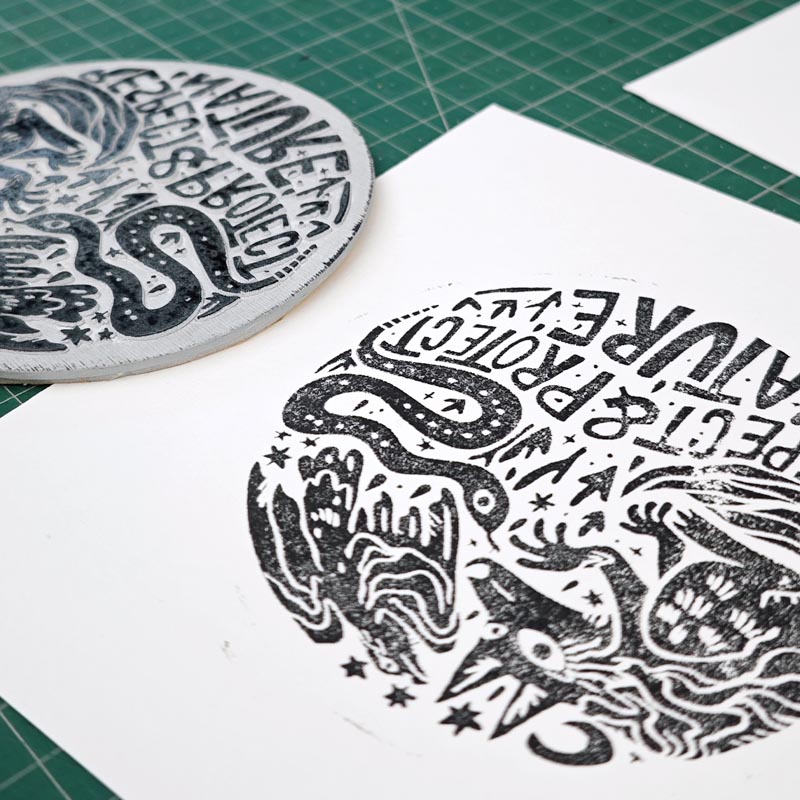

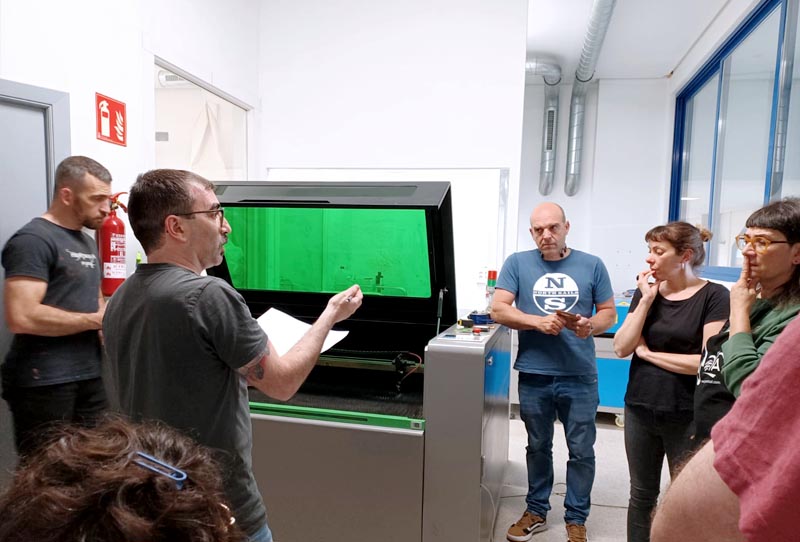

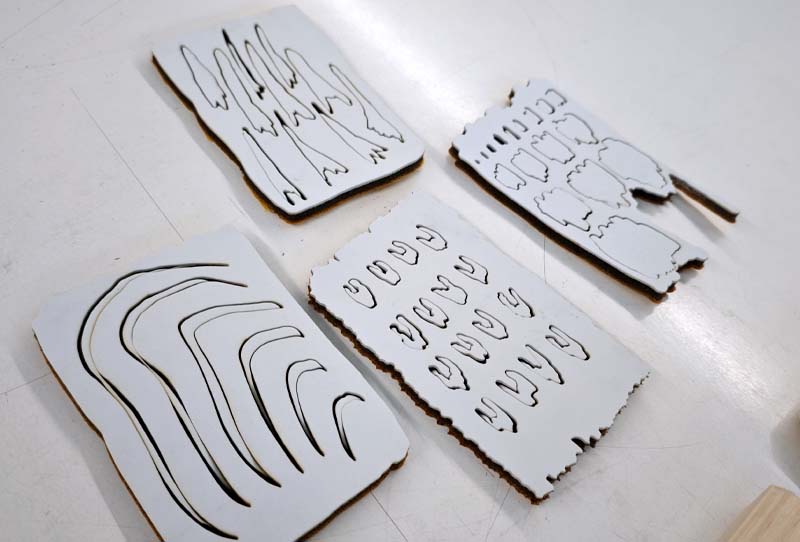

A Week of Shared Creation at BilbaoArte Fundazioa
Technical diversity was the guiding thread of the workshop: each participant developed their own approach, combining methods, materials, and surfaces.
Throughout the week, personal projects, graphic tests, experimental exercises, and pieces emerged that pushed beyond the traditional idea of the stamp as a utilitarian object.
The small group of twelve participants; including art educators, printmaking specialists, designers, illustrators, artists, and printmaking enthusiasts, brought a wealth of perspectives that deeply enriched the experience.
Their engagement, openness, and enthusiasm created a generous, dynamic working atmosphere that fostered shared learning. It was a true pleasure to share this graphic journey together.
From Rittagraf, we would especially like to thank Pilar Valdivieso and Jon Bilbao, heads of the Printmaking and MediaLab workshops at BilbaoArte.
Their technical support, constant availability, and expertise were key to the smooth development of the workshop.
We would also like to extend our gratitude to BilbaoArte Fundazioa for inviting us to be part of their educational program and for welcoming us into such a complete and committed artistic space.
Working in an environment like this—open to interdisciplinary dialogue, equipped with specialized technology, and focused on supporting creative production—is a true privilege.
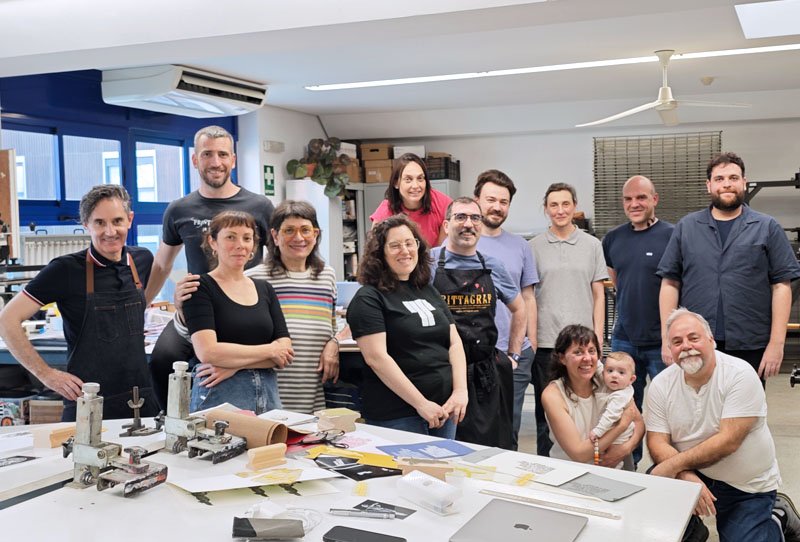

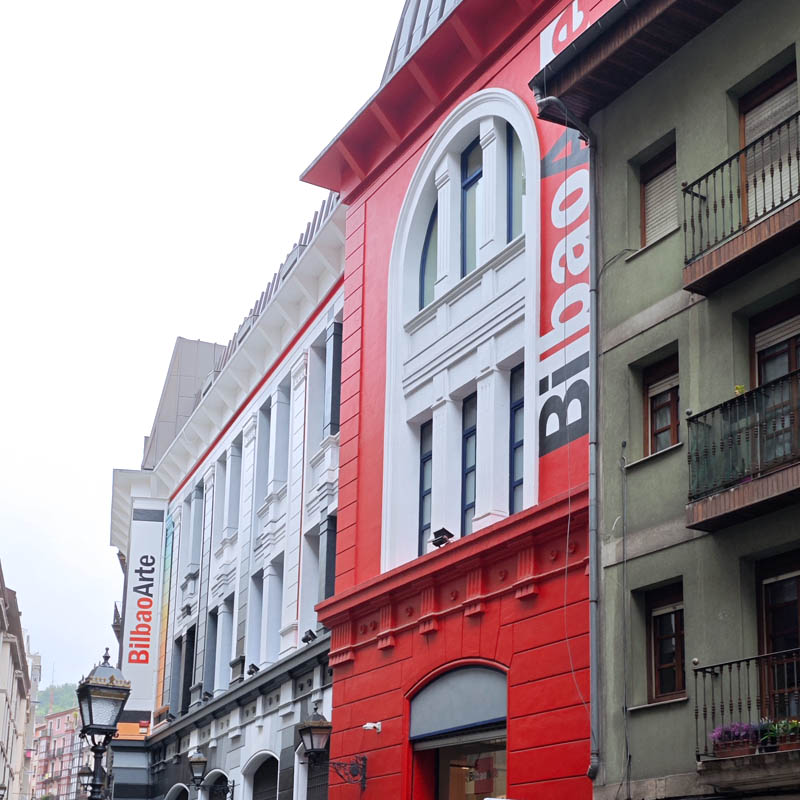

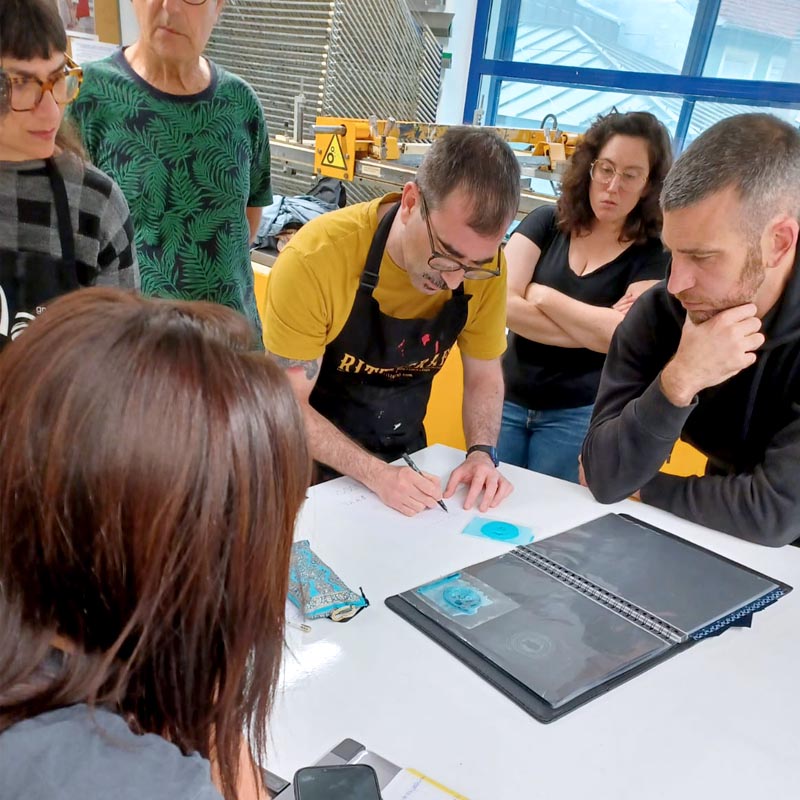

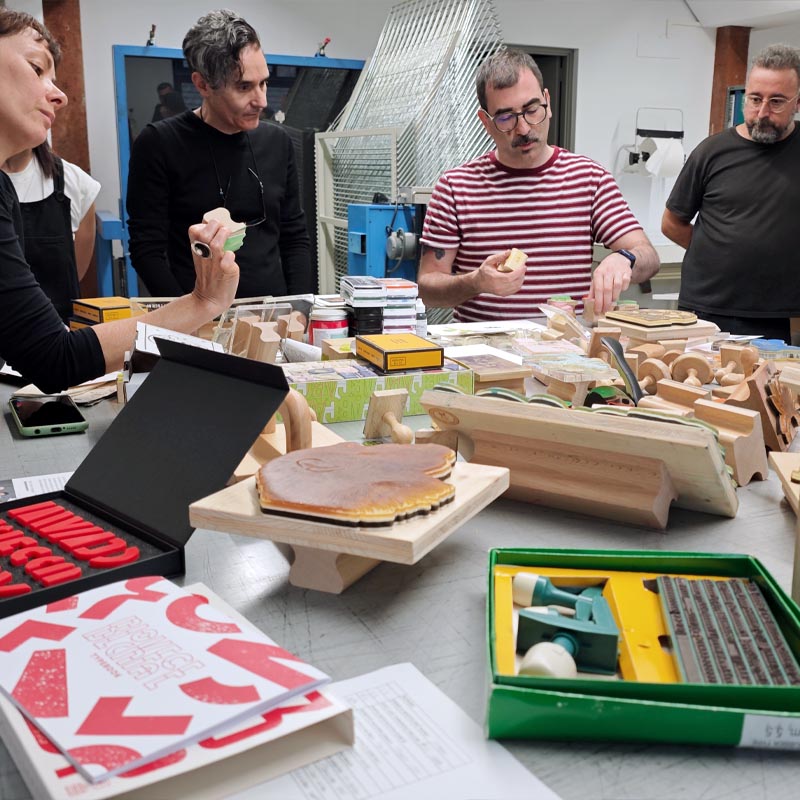

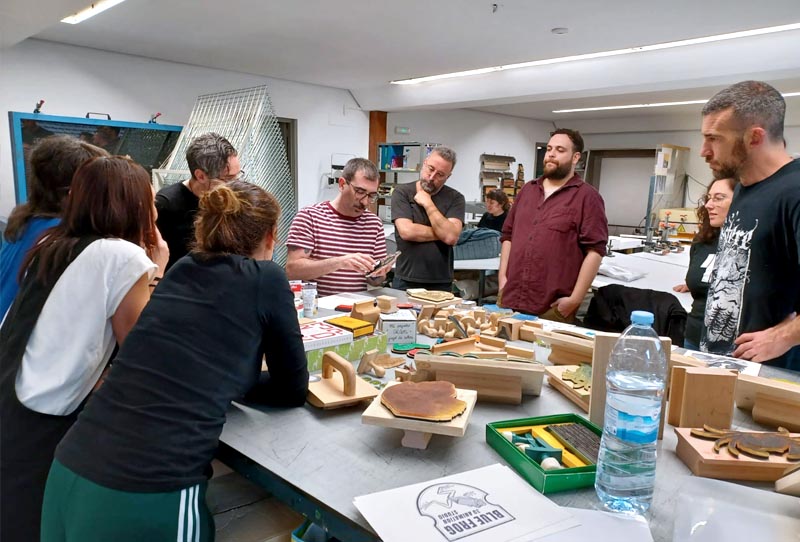

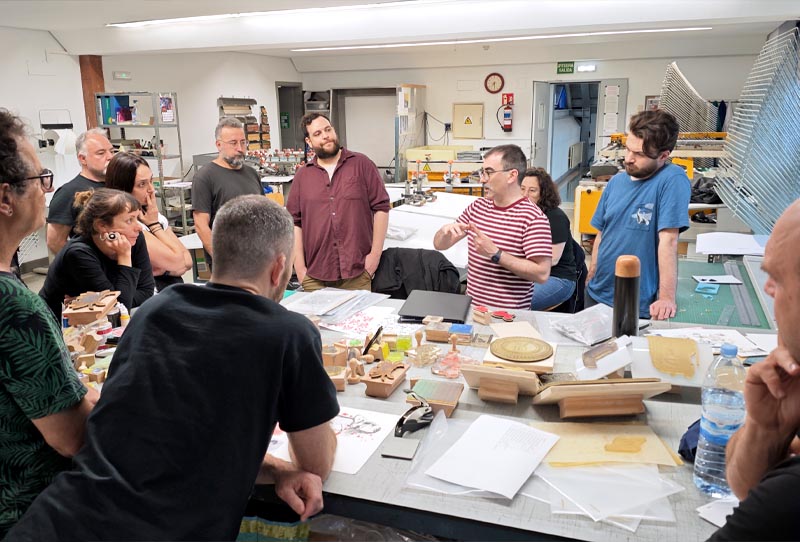

As custom stamp makers and passionate advocates of manual and experimental printing, experiences like this allow us to share knowledge, keep learning, and connect with others who, like us, see graphic arts as a living, ever-evolving field.
Exploring the stamp as a form of expression, mastering its many production methods, and blending tradition with technology are central pillars of our practice. Being able to do so alongside such engaged participants reinforces our commitment to promoting these practices through education, research, and technical production.
